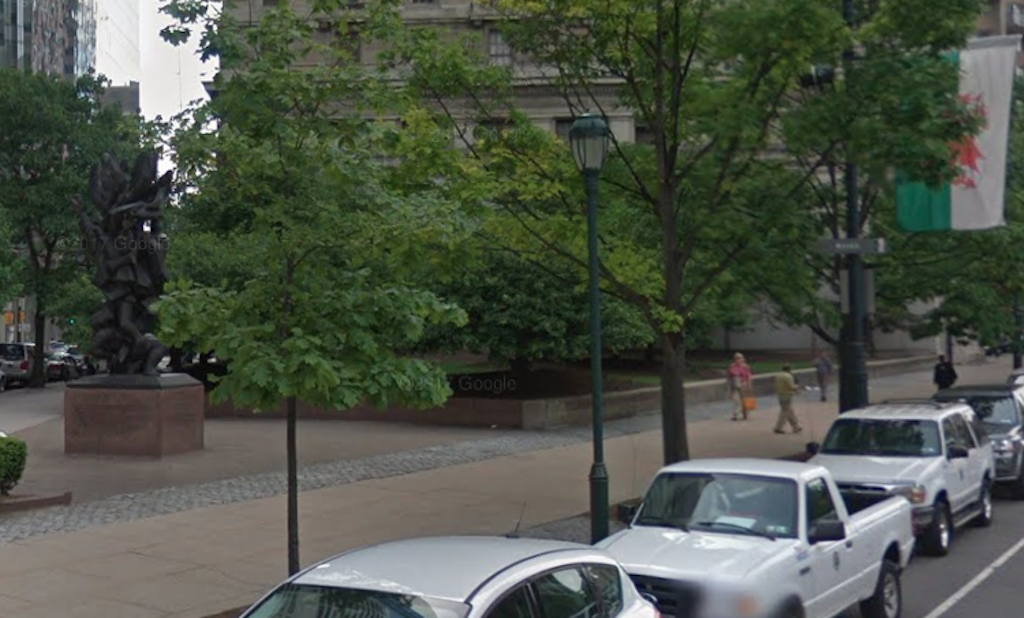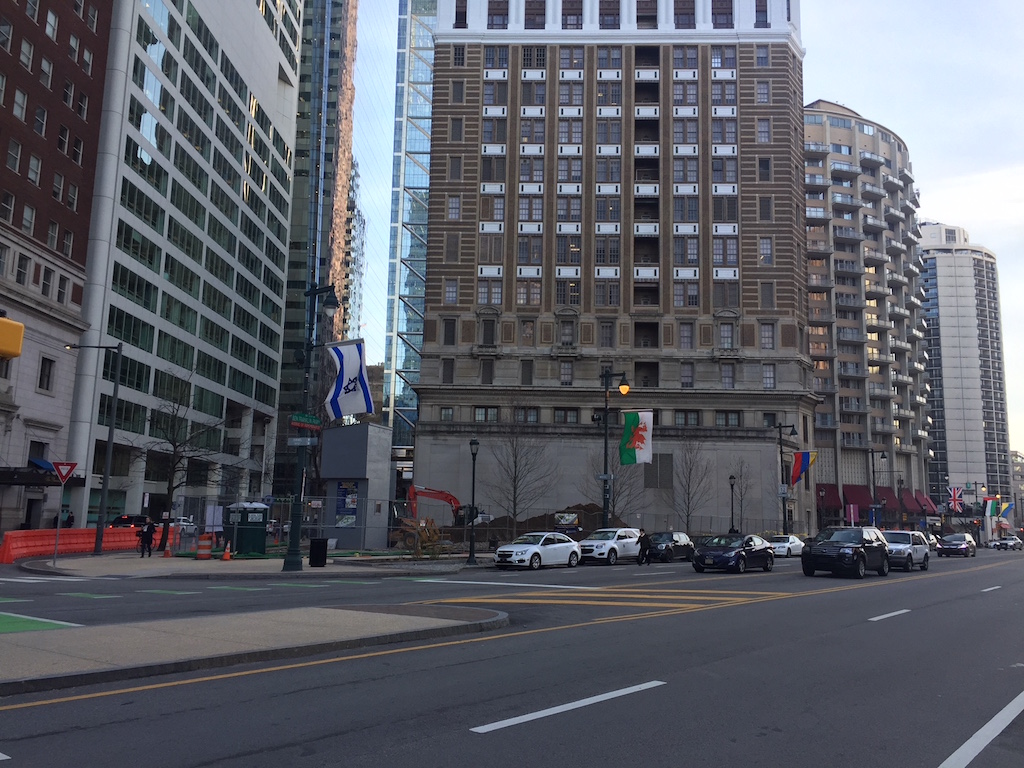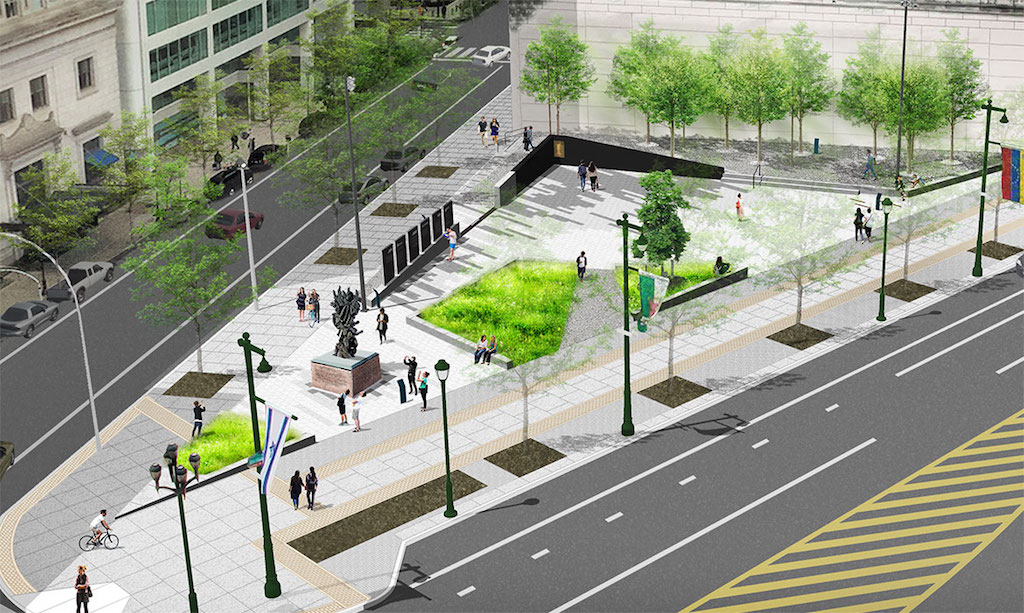In 1964, at the northwest corner of 16th & Arch, the first monument appeared in North America memorializing the Holocaust. The statue was created by sculptor Nathan Rapoport, and sat at the point of the triangle that’s created by 17th Street, Arch Street, and the Benjamin Franklin Parkway. We don’t know what the rest of the triangle looked like back in 1964, but for the last decade at least, there’s been a slighted elevated area behind the statue, with some grass and a smattering of trees. This condition makes for a generally unimpressive public space that’s also somewhat difficult for people to use.

The Philadelphia Holocaust Remembrance Foundation has been working for over a decade to redesign the park surrounding the monument into the Holocaust Memorial Plaza, and their efforts are now paying off. If you visit this site today, you’ll see it’s under heavy construction, as a total redesign is now in process. This redesign will greatly enhance the usability of the space, and will certainly ensure it receives more attention from residents and tourists alike.



Along with preserving the existing monument, the park will also include six stone pillars which contrast Holocaust atrocities with American values. There will be a Remembrance Wall with an Eternal Flame, a symbol of light in times of darkness. Trees will figure prominently into the design of the park, with a grove of trees representing the wooded areas where people hid from the Nazis, and a sapling from a tree the grew in a concentration camp representing hope for the future. Finally, there will be train tracks embedded in the ground in the park, taken from the railroad next to a death camp, as a clear reminder of the victims of this atrocity.
With construction proceeding apace, the expected completion date will come sometime this fall. Once the plaza opens, it will be provide various educational opportunities, both through events organized by the foundation and through an app that will provide interactive testimonials and guided tours of the site. It’s never “fun” to visit a site that commemorates a tragedy, but these types of places are an incredibly part of the urban fabric. Through education and remembrance, the memories of the victims will be honored, and efforts will be made to prevent an event like the Holocaust from happening again in the future.
